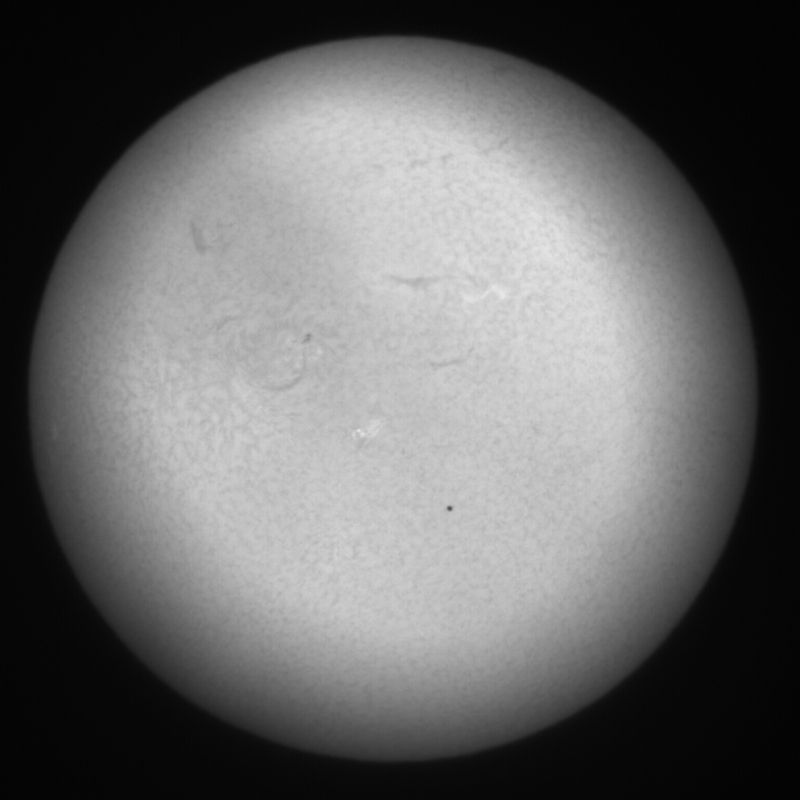Astronomers around the world today witnessed a relatively rare alignment of the planet Mercury and the Sun. Mercury passed directly in front of the Sun's disc in an event known as a transit.
Southern California normally has clear skies, but in the San Diego area May and June can be particularly cloudy as low clouds frequently blow in from the ocean. Locally it is known as "May Gray" and "June Gloom."
Today's transit of Mercury was mostly a victim of the May Gray from my vantage point at Palomar College (that's where I teach astronomy).
The event began before the Sun rose in California, making the first part invisible. The clouds blocked most of the rest of the view, but they did part a bit early in the morning.
The college's NS Building has a rooftop solar telescope and the photo below comes from it:
This image was taken with a hydrogen alpha filter that reveals some of the details just above the Sun's photosphere. Mercury is the small black dot.
Compare the view of Mercury above, with the pic below that I took during the June 2012 transit of Venus:
Different telescopes were used (the Venus transit photo was of a white light projection using my personal telescope), but it is easy to see that Venus (the big black circle) looks a whole lot bigger than Mercury does. This is because Venus is a whole lot bigger than Mercury is and also because Venus is significantly closer to Earth than Mercury is. The other spots on the Sun are sunspots.
If you missed today's transit, here's how it looked from NASA's Solar Dynamics Observatory:
The next Mercury transit event will be on November 11, 2019.
Southern California normally has clear skies, but in the San Diego area May and June can be particularly cloudy as low clouds frequently blow in from the ocean. Locally it is known as "May Gray" and "June Gloom."
Today's transit of Mercury was mostly a victim of the May Gray from my vantage point at Palomar College (that's where I teach astronomy).
The event began before the Sun rose in California, making the first part invisible. The clouds blocked most of the rest of the view, but they did part a bit early in the morning.
The college's NS Building has a rooftop solar telescope and the photo below comes from it:
 |
| Photo by Tony Kopec |
Compare the view of Mercury above, with the pic below that I took during the June 2012 transit of Venus:
Different telescopes were used (the Venus transit photo was of a white light projection using my personal telescope), but it is easy to see that Venus (the big black circle) looks a whole lot bigger than Mercury does. This is because Venus is a whole lot bigger than Mercury is and also because Venus is significantly closer to Earth than Mercury is. The other spots on the Sun are sunspots.
If you missed today's transit, here's how it looked from NASA's Solar Dynamics Observatory:
The next Mercury transit event will be on November 11, 2019.

No comments:
Post a Comment